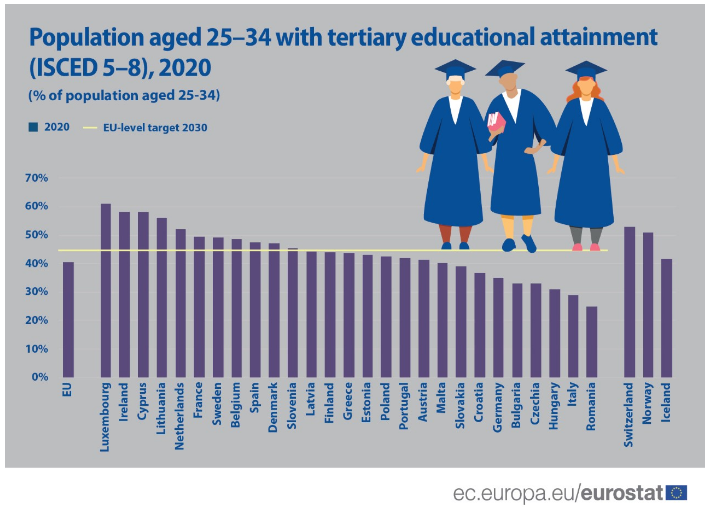The European Union’s statistic agency, Eurostat revealed that in 2020, 41% of the European Union (EU)’s population aged 25-34 years had completed tertiary education.
The report shows that there is a clear gender difference among those with tertiary education, indicating that a larger share of women (46%) aged 25-34 had completed tertiary education than men (35%) according to a press release.
While the share of men with tertiary education has been on the increase over the last ten years, the rate of growth has been slower than for women. The gender gap has increased to 10.8 percentage points (pp) from 9.4 pp in 2011.
The EU Member States have set themselves a target of increasing the share of the EU population aged 25-34 who have completed tertiary education to 45% by 2030.
Share of population with tertiary education attainment highest in Luxembourg, lowest in Romania.
Eleven Member States have already met the 2030 EU-level target for this indicator: Belgium, Denmark, Ireland, Spain, France, Cyprus, Lithuania, Luxembourg, the Netherlands, Slovenia and Sweden. In five of these, more than half of people aged 25-34 had a tertiary level of education in 2020: Luxembourg (61%), Ireland and Cyprus (both 58%), Lithuania (56%) and the Netherlands (52%).
The lowest shares that were recorded was in Romania (25%), Italy (29%), Hungary (31%), Bulgaria and Czechia (both 33%).
Looking at the differences between age groups in educational level attainment, there is a clear age divide: 36% of the EU population aged 25–54 had tertiary level education compared with 22% of those aged 55–74.
The report also shows that the largest differences between the age groups were recorded in Ireland (25pp), Luxembourg and Cyprus (both 24pp), Poland (22pp) and Malta (21pp). At the other end of the scale, there were four countries with the difference below 10pp: Bulgaria and Hungary (both 9pp), Germany and Estonia (both 6pp).



